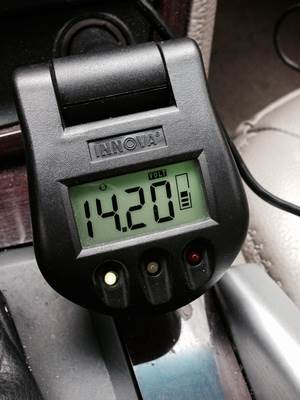To some extent, you were correct when you held the thought that your vehicles run on fuel. However, before fuel, your car requires electricity to turn the starter and a strong spark to fire the engine. In the end, air is required if the spark want to ignite the fuel. Actually, car troubleshooting is mainly about which one of the three aspects isn’t working properly into the combustion chamber. When your encounters a no-start trouble, there’s no doubt some testing relative to the electrical and charging systems should be carried out.
Some of the most important tests when troubleshooting automotive electrical systems are voltage tests. You want to know the voltage of your battery before you turn the key, and you need to know the voltage that is being sent back to the battery from the alternator while the car’s engine is running. Once you have these two numbers you’ve gone a long way toward determining what may be wrong with your vehicle’s electrical system.
n the past, these electrical tests have involved a hood-up, pulling over to a safe place off the road, in-depth analyses with often expensive meters and rigs. Back in the ‘80s we had a digital multimeter to read static voltage or battery voltage and a gigantic alternator tester that measured alternator output using a fat, hot heat sink. It was major, not because it was tough to use but because it was a large tool that could not be used on the fly. On top of that, these tools were really expensive considering how little they measured.
But times really do change. Thanks to technology we have many advantages over the old ways. In terms of charging system checks and diagnosis, there is a tiny, inexpensive tool that can send you immediately in the right direction. For this write-up, I chose the Equus Innova 3721 Battery and Charging System Monitor, not because it’s the best or the go-to tool. I chose it because it was the cheapest tester they had on the shelf at Wal-Mart so I could prove once again that you don’t need to spend a lot of money to get really good information that will lead you to a correct diagnosis of your car’s engine problems. This handy little meter plugs into your cigarette lighter and actively measures voltage output. With your key in the on position, it will measure the condition of your battery. You’ll want to see something in the neighborhood of 12 volts. Thankfully it’s displayed clearly on the tester’s screen. With the vehicle running you have now switched to measuring the vehicle’s alternator output, usually around 14 volts. To make things even simpler, there colored LEDs — green, yellow and red — indicate the general health of the charging system. This is a major piece of convenience that plugs right into your power outlet (formerly known as the cigarette lighter).
Since you have a basic clue about your system’s weaknesses, you can begin with corresponding improvements. Perhaps, all you need to do battery terminal cleaning or a battery replacement. Or perhaps you have a bad alternator. No matter which one is the case, you can now have a quick and cheaper check. This may not directly replace the $500 battery and alternator tester, but at least it’ll be good in money-saving.

The Easier Charging System Checks
by
Tags:

Leave a Reply